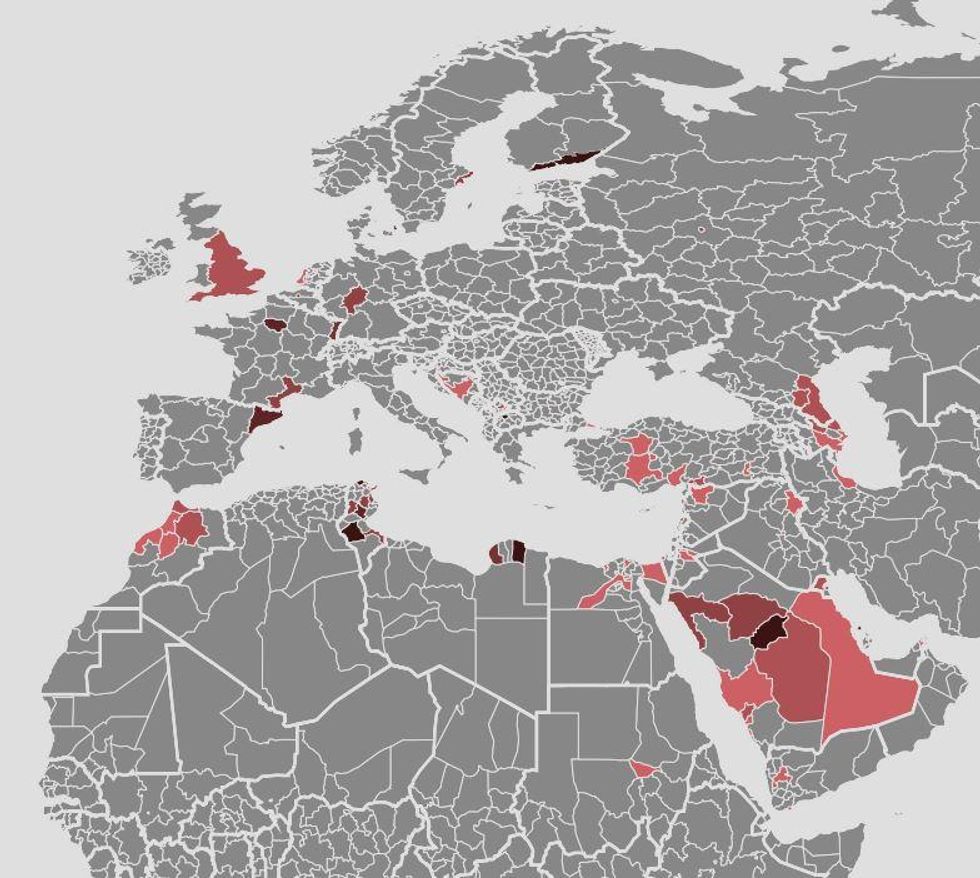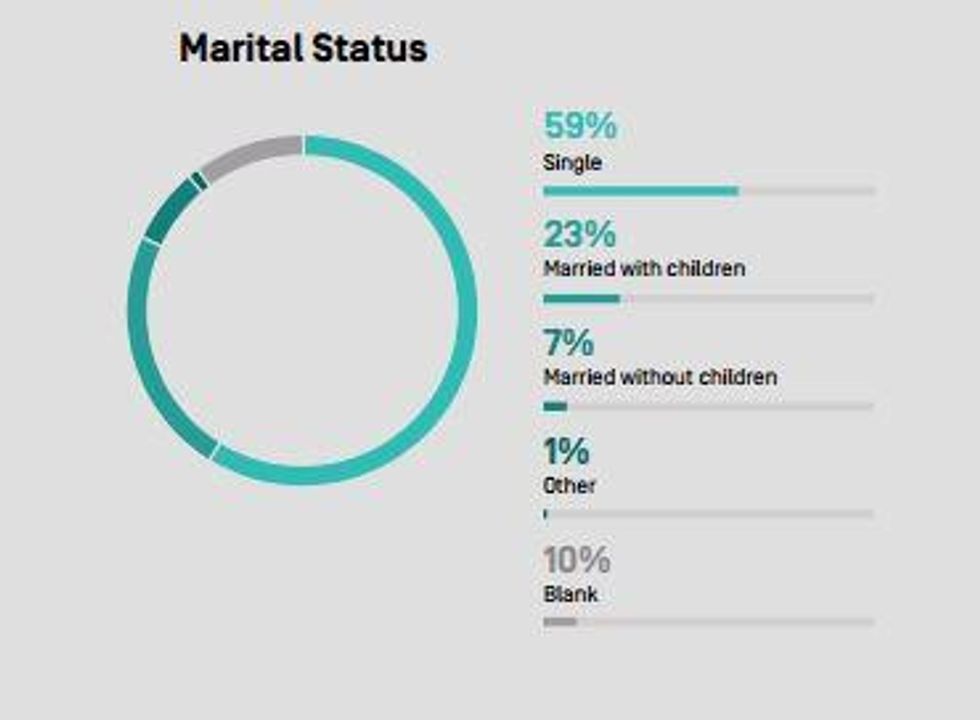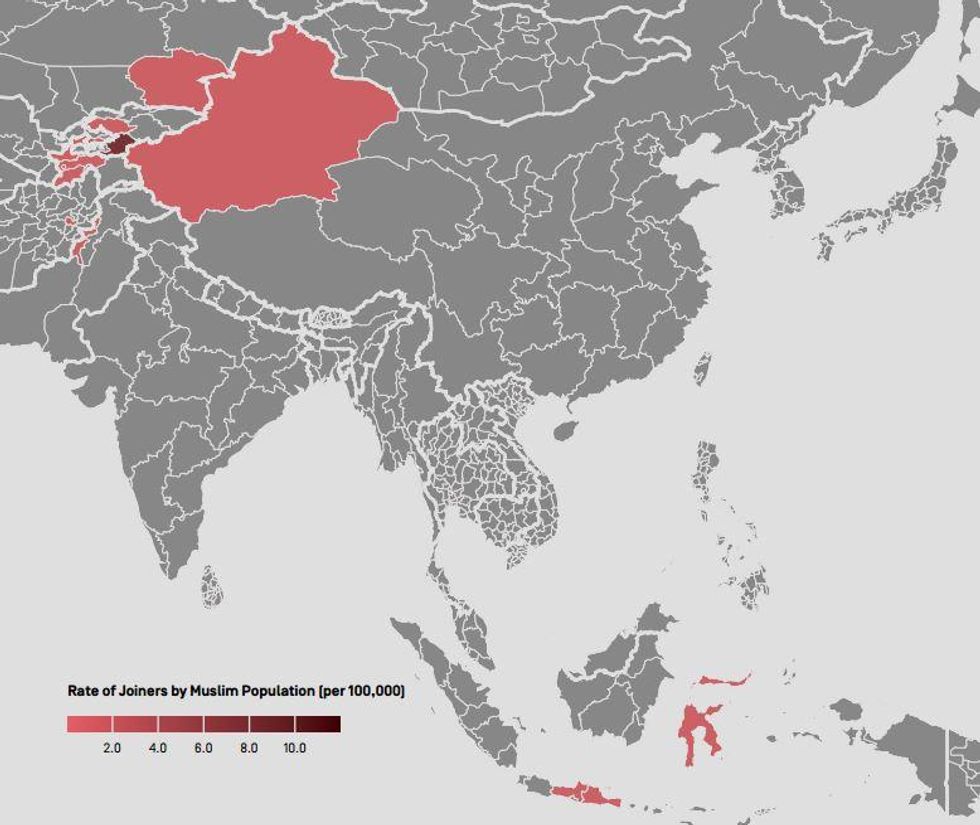News
Bethan McKernan
Jul 27, 2016

A new report from an American political thinktank has provided the fullest analysis of the socio-economic profile of foreign Isis fighters to date.
While lots of work has been done to try and understand the pull factors of Isis' particular brand of extremism, the New America Foundation wanted to dig into localised conditions and backgrounds to discover what drives foreigners to join the caliphate.
Author Nate Rosenblatt combed through a leaked cache of recruitment documents stolen by an Isis fighter who defected in 2016.
The self volunteered information from registration forms is thought to encompass around 10 per cent of the group's total soldiers, and makes All Jihad is Local the only quantitative study so far to piece together what the average profile of a foreign Isis member looks like.
Breaking down the data according to geography suggests that people join the group for lots of different reasons, and at different stages in their lives, depending on where they're from.
On average, Isis joiners are young, single, with low access to resources or employment with which to start a family, and have a "slightly more than basic" understanding of Islam.
Rosenblatt also found that before they left for Syria or Iraq, many fighters had little experience of foreign countries. Twenty-five per cent of those asked had never left their home country before, and only 14 per cent said they had visited more than three.
On a subnational level, the report found that many Isis recruits come from areas with a long history of resisting the state, such as Xinjiang in China and Derna in Libya.
By proportional contribution, London came seventh highest, with 22 fighters.
In Derna, Libya, where interest in Isis was strongest, the average age was just 22-24. Rosenblatt concluded the intensely poor conditions drive people to leave, and that radicalisation has transcended generations in the restive area - whereas in Quassim, Saudi Arabia, people are highly educated and relatively wealthy, but the region is also a Wahhabi heartland.
In the predominantly Muslim region of Xinjiang in Eastern China, the standard deviation in age was much wider than other areas: one fighter joining aged 80 after his son was killed fighting in Syria. People from Xinjiang also joined later than others, suggesting they waited for the caliphate to strengthen its position before making a permanent relocation.
The report concludes:
Local interventions could prevent the spread of radical ideology before it takes root. Motivations for foreign fighters are derived from highly specific local conditions, and so must the solutions.
As Isis continues to lose territory in both Iraq and Syria, and more and more people try to defect, the fight agaist the group may change to a battle against fighters who return home and continue the ideological battle from there, Rosenblatt warns.
Learning who Isis’ fighters are and where they come from is essential to developing effective policy responses to local conflicts that Isis effectively links to its ideology and agenda.
More: Isis supporters in Europe are accidentally revealing their locations on social media
More: Belgium provided the most Isis fighters per capita of all EU countries last year
Top 100
The Conversation (0)
















